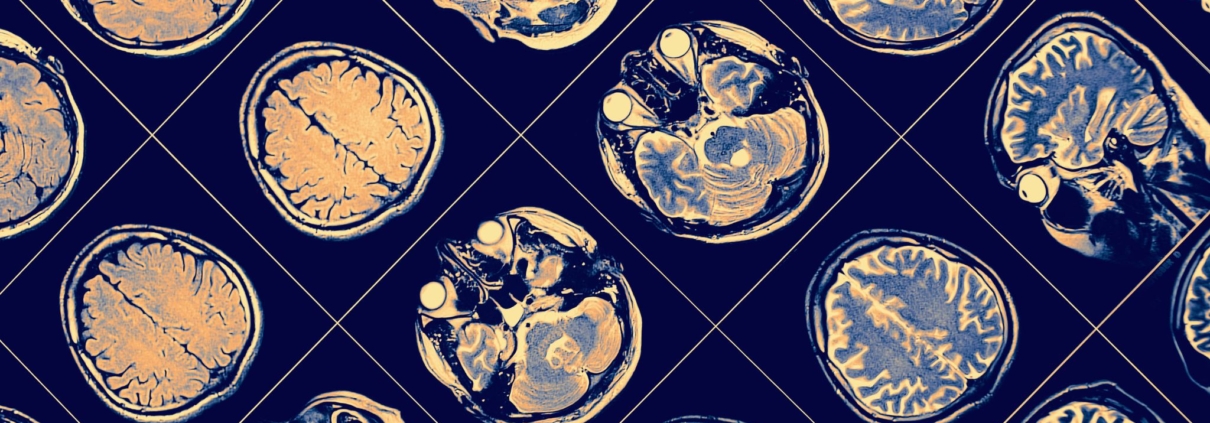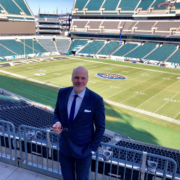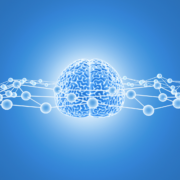Music and the brain
Sure, Dr. Eric A. Zillmer is the Carl R. Pacifico Professor of Neuropsychology at Drexel University. Yes, he serves as the school’s athletic director emeritus, and is the director of The Happiness Lab, a Drexel thinktank that investigates the meaning of happiness and its place in our culture. He’s a past president of the National Academy of Neuropsychology (NAN). He’s even a stroke survivor. Dr. Zillmer’s real passion is music. He is an accomplished musician and the current President of the Philadelphia Classical Guitar Society. He also spends much of his free time thinking about the intersection of music and the brain—how we as humans interact with and process music when we hear it. BrainWise Managing Editor Matt Villano recently sat down with Dr. Zillmer to discuss some of these topics. What follows is an edited transcript of their interview.
BrainWise: Generally speaking, what happens in our brains when we hear music?
Dr. Eric Zillmer: When you’re listening to music, it is relaxing, it lowers your blood pressure, it makes you feel good. There are very few things about music that are bad or wrong. If you think about it, [music] is almost a panacea to feeling well and happiness and creativity and just a lot of good things. If you look underneath the hood [of our brains], there’s a lot going on [when we hear music]. The brain contains billions of cells and neurons and an infinite number of possible connections among individual neurons that allow for this amazingly complex information exchange. Music locks you into the brain and into the moment, which is a beautiful, pleasant thing to do, very much like you would when you drive a car or when you engage in art or anything creative that requires you to be present. So that’s what happens.
I think a good way to frame all of this is that everything psychological, everything musical is essentially biological. When people say, ‘I trust my gut,’ or, ‘Let’s play it by ear,’ their behavior and thinking has a little to do with your ear and gut; it has to do with how your brain processes information. For me, as a teacher of how the brain works, I try to make how the brain works come alive, and I try to answer questions that seemingly look simple but may be complicated.
BrainWise: Can you elaborate?
Dr. Zillmer: If you think of the brain as a house that’s being remodeled and has many, many different rooms, there’s music everywhere. This analogy works well because we’ve had this reptilian brain, I would call it the basement, where sleep and breathing and heart rate [happen]. And then you have the first floor, which is the limbic system, the second floor is the cortex. And you have this new structure, this beautiful penthouse. Music enters the brain at the lowest level, we call it the brainstem. Which basically means we are hardwired for music.
From there, music is processed in many different areas of the brain. Even at the lowest level there is crossover. Almost everything that comes from the right side goes to the left side. There’s complexity right away when you’re dealing with music. If you’re a neuroscientist, you might say, ‘Wait a minute, this is interesting. What role does this play in evolution? What role does this play in humanity and making us feel humans?’ You don’t realize this when you put the stylus on the vinyl, you’re just listening to something. Then the brain starts processing. It manages information and then sorts it out and gives it meaning. In psychology, we talk about the difference between sensation, which is basically just realizing there is information out there, and then perception, which is, ‘Oh, this song sounds like Metallica.’
As we get a little bit more complicated, up in the evolutionary ladder of the brain to the first floor, we call that the limbic system, limbic meaning the border to the brain, and it includes several interesting structures that are well-defined. It’s like there’s certain rooms in this house that are well-defined, and one room is the cerebellum, which is an interesting structure in and of itself. Phrenologists thought this was where music was processed, so they would identify people’s skulls to see if they had a larger area in the back of their heads—where the cerebellum resides—and determine if someone might be musical. The cerebellum is a very complicated structure, it’s the brain’s organ of agility, it involves almost all cognitive functions related to music perception and music production. I think of it as a large filing cabinet. Everything gets sequenced there in terms of time and rhythm, and it’s being done automatically without you being aware of it.
So, you’re listening to music, and you don’t have any idea that this supercomputer, your cerebellum, is working all the time, just like when you turn on your car and the engine is running underneath the hood. And this cerebellum is a beautiful little piece of the puzzle because it requires the analysis of music. But when you play music, it also requires you to learn how to phrase a piece of music and then store it in the cerebellum.
BrainWise: The cerebellum plays a big part in how the brain engages with music. What other parts of the brain are important?
Dr. Zillmer: Another one is the hippocampus because it’s associated with memory and emotions. And anybody who thinks about music can relate to that because, if anything, music is emotional. And many times, when I was young, we would give music to a friend, a cassette deck, or we would make up a CD. And you’re thinking, ‘What am I actually giving them?’ Well, you’re giving them an emotion, and you’re presenting them with a potential memory. And that’s because music, as it works its way up to the penthouse, gets tagged emotionally, and then it also gets tagged with a memory. So, a lot of times it can’t be separated. Because it travels through this structure, which looks like a seahorse-shaped brain structure, and it processes conscious memories and explicit memories and implicit memories. There’s a lot going on even before you realize what you’re hearing.
There also is tremendous neuronal connectivity related to the processing of music. And many researchers think music came before language, so it makes sense that the brain has a lot of architecture that is related to understanding music, to identifying it, to appreciating it. (Language is much more localized in the smaller part of the brain.) There’s also a connection between our major sensory sense, which is vision, and this auditory information. In the visual cortex, we associate watching music and hearing music, so there’s a connection there between music and vision. Here one thinks about MTV or going to a Pink Floyd concert and seeing all the visuals and the artists standing in the shadows, or going to an opera and seeing all of this presentation.
Interestingly, in the brain there’s an area in the cortex [that controls] movement and feeling sensation. When music is being processed by your brain, it activates the motor strip and the motor cortex, and that’s why people dance, or they would like to dance to music or move to music. Even when I talk, I would say language is a form of music, [since] I use my hands. And so there is this integration and synchronization between motor behavior and auditory sounds.
There is a neurological reason that’s connected to the auditory processing system. Even when people sit still, there’s research that shows that the brain is activated in those areas, and there must be other areas in the brain that superimposed the inhibition of that activation, almost like you’re at war with yourself sitting still while listening to a rock concert, that’s why people want to get up and move. This idea of sitting quietly and processing music is somewhat incompatible with how the brain works. It’s much more compatible in terms of getting up and moving around.
BrainWise: You mentioned the ‘penthouse’ of the brain. What is that and what did you mean?
Dr. Zillmer: The penthouse of the brain is, of course, the frontal lobe, the most recently evolved structure. And it is so interesting because it allows free will, the idea that you can play music or that you can turn it off, and that you prefer different genres. Yet if you look at jazz and classical music and pop and R&B and electronic dance music, I do think the brain doesn’t differentiate between them. (See this article for more about this phenomenon.) What the brain kind of senses is beats per minute. If you’re a DJ, you know what that means because you’re locking into the synchronization of how your brain works.
The frontal lobe would allow you to make those kinds of selections. We have these genres, but I think you’re just dialing into the mood of how you want to consume this music. And that is interesting because most people want to listen to music to feel good or feel sad or feel reflective. And there’s these great mysteries why a minor chord would make people feel sad, and why a major chord would make them feel happy. But if you understand it within the idea that music is being traced through memories and through emotions, and then you can make that choice, it makes more sense.
BrainWise: A recent study out of New York University determined we can tell within the first five seconds of listening to a song whether it’s going to be a song that resonates with us. Why does this happen?
Dr. Zillmer: We are very good at reducing complex information into its units. Our brains are so good at sequencing information that we’re paying so much attention to the timing and synchronization of information that we don’t even think about. This leads to other mysteries. How is it possible that people who are blind, like Joaquín Rodrigo, a famous Spanish composer, can compose music? I bring him up because in the second movement of the Concierto de Aranjuez, he has three notes that Santana plays, Miles Davis plays, and probably 20 other artists have played them in pop culture. What is he tapping into? How is it possible that these three notes make so much sense?
BrainWise: Why and how do our brains affix music to certain memories?
Dr. Zillmer: Music is not that concrete, and it’s much more abstract. It’s almost like an inkblot test—an auditory inkblot. Almost everything we listen to is an ink blood test, it’s abstract, and we attach meaning to it because our frontal lobes are always on. I personally think it’s bad because we’re always trying to figure things out. We’re always on social media inside our own brains. I wish we would have a switch and we just turn it off, and we’re not trying to explain everything. Of course, then it becomes important to have the memory be filed away. But most of the time it is just an offer and a suggestion. That’s why music is played in bars, in food stores, in the elevator, and certainly when you’re performing gymnastics or figure skating. In these settings, music is evoking the potential, opening the door for a projection or a memory to occur. It might be an abstract memory, it could be it makes me feel sad, or it makes me feel good, or it makes me feel like being around people. But there’s a connection.
BrainWise: So why can we remember every word from a song we learned 30 years ago, while many of us can’t even remember what we ate for lunch yesterday?
Dr. Zillmer: Words are music, too. We rarely talk without intonation or rhythm, like the computer in ‘2001: A Space Odyssey.’ All this intonation and rhythm in speech is music. When you’re having auditory information coming into your brain, you are having a narrative that’s much deeper and complex because of the abstract nature. It has an opportunity to resonate in different ways, in different areas of the brain. Like I just said earlier, there are so many architectural geographical areas in the brain where music gets managed. It could be having a visual association, it could have a memory association, it could have no association. That is the beauty of it. More than half of all Nobel Peace Prize winners play an instrument, which means they’ve tapped into this conversation with themselves about creativity, opportunity, and hope. It’s much more complicated than language, and it also leaves the door open for growth and for self-actualization and creativity.
BrainWise: What is it about music that makes our brains—and bodies—react viscerally?
Dr. Zillmer: I’m a sports psychologist, and I’ve recently also worked with musicians because I really think of them as athletes. If you look at their personality profiles, the way they attack a problem and solve a problem, they’re very similar to athletes because it’s difficult to perform music. I think at the top of this food chain are vocalists. But if you think of a guitar solo like by David Gilmour or by Carlos Santana, they’re talking. And there are sections where they’re playing, and then there are sections where they are breathing, so to speak. It sounds like he’s talking, and I think that’s how they conceive music, they’re using, not their vocal cords, but they’re using the guitar. The most famous vocal groups like The Beatles and Crosby, Stills, Nash & Young, and the Bee Gees, have these incredible harmonies. And you could even argue that the Bee Gees have the best harmonies because they’re all from the same biological source because they’re brothers.
When you study the longest living people in the country, cultures, so for example, you go to Sardinia where the longest living men live, one out of 10 men live to the age of 90, healthy, you see a lot of different things. And, of course, people will focus on nutrition, but it’s also the lifestyle, how they eat and how they physically exercise. And that they do everything in moderation, including drinking, even though they make wine, and they make good wine. But something else they do is sing together. And really nobody talks about that. They look at the Mediterranean diet, but these people also sing together. And they have these beautiful groups of four men singing together in harmonies.
When we sing in harmony, we have a lot of neuronal circuitry that is dedicated to understanding the pitch and harmonies of a melody. When you’re singing like this with other performers, you’re simply activating more connections in your brain, thereby making it more interesting to listen to. And if it’s done well, and that’s what harmonies are, it must resonate with the architecture of the brain in the way we process information. The end effect is, ‘This is beautiful.’ You don’t even know what’s happening. You just think, ‘This is really pleasant and it’s really uplifting.’ What we also are learning from Sardinia is that also this idea that a culture does this suggests a form of socialization at the highest level, a form of bonding. There’s a connection not only between the music and the sounds, but also in terms of us humans doing this together that makes it very magical and special, makes those people happy, makes them feel like they’re connected. If you study happiness, the No. 1 key is social relationships. You’re doing something together, but you’re also doing something together that’s synchronized in a very complicated way by using your body as an instrument and having that come together in the auditory sense.
BrainWise: What happens in the brain when a musician engages in improvisation?
Dr. Zillmer: When you think of most of the music that we play, it’s concrete. The piano is like a typewriter, there are not that many keys. There are more keys than there are notes or on the guitar frets. But even on a guitar, there are 12 bars, six strings, and a bunch of frets. You can bend the string like some artists do to create a different kind of note. Even though it sounds infinitely difficult to understand music, especially in the Western hemisphere and the Western civilization, music has been very concrete. If you go to a normal orchestra concert, they play from a sheet of music and they’re playing something that was composed potentially 200, 300 years ago by, maybe Johann Sebastian Bach. The only modification is how they’re interpreting this piece of music. There’s no improv at all, it’s all being played from the source that the composer created. Most music is played like that.
Well, once musicians really work hard at what they’re doing, and like I already said earlier, they file everything into a filing cabinet, they must make everything automatic because the complexity of music is such that you can’t process and synthesize it at the same time. You must have it already stored. That’s why you need 10,000 hours of practice to become a professional musician. And if you are blessed with more talent and more perseverance and discipline, you become a virtuoso. These musicians look like they’re performing on the fly, as if they’re improvising. But if you think of what true improvisation would look like, it would look like randomness; it would be just random numbers, random notes. We don’t like that either, even improv needs to be within the context of the music.
What I’ve learned from the jazz guitar is, for example, that there’s quite a lot of structure within a jazz piece. The structure comes in key and chords. What jazz artists are very good at is changing the key with the chord, which is hard to do because you must have in your head all of the scales that go with a specific chord. You might change from A minor to E major within two beats, and you’re changing your solo, which jazz artists do. This sounds like improvisation. It’s very difficult and it’s very automatic, and it may even feel to them like improvisation, but they’re just playing scales. And so, I think there’s less improvisation to it than people might think, but I don’t think it takes anything away from it because it just looks like it.
BrainWise: Where will your research into music and the brain go next? What are the next big questions you plan to ask?
Dr. Zillmer: The first question is why is there music there to begin with? It’s also interesting to look at what makes music, music? With AI everywhere these days, it seems like a computer could create this kind of pop song that could hit the Top 10. I mean, computers can beat humans in chess! But so far, no computer can compose music that we would consider novel and satisfactory or even celebrate. There are some other mysteries. One I already mentioned is this idea that music can sound sad, but also can sound happy. That is interesting—the connection between music and emotions. The moment you hear a piece in D major, it’s going to be uplifting and it has some hope. And then the movement changes to B minor and it’s all gloom and desperation, like the world is coming to an end. How’s that possible? That’s how composers composed it. Did they know this, or is this just something essentially how we live our lives?
Then there are interesting questions surrounding dancing to music. I don’t think we’ve really understood how that all happens there. There’s an interesting neuropsychological event that’s called synesthesia, which is where people hear music and sounds at the same time. Unfortunately, I don’t have that. I think I would love that. It’d be like a Pink Floyd concert in my head all day. How is that possible? The final question is what door does music open to our understanding of us as humans? That is ultimately the biggest question. When we send an object into space to represent humanity, I would send a piece of music. I think it captures us best and represents us as a people. There’s nothing to regret about ever putting on a record. It’s almost universally positive.
Editor’s note: Dr. Zillmer has contributed several panels about the intersection of music and brain science to an exhibit at the Paul Peck Gallery and Bossone Research Center at Drexel University in Philadelphia. The exhibit is titled, “Electrified: 50 Years of Electric Factory,” and will run through December 2023.









